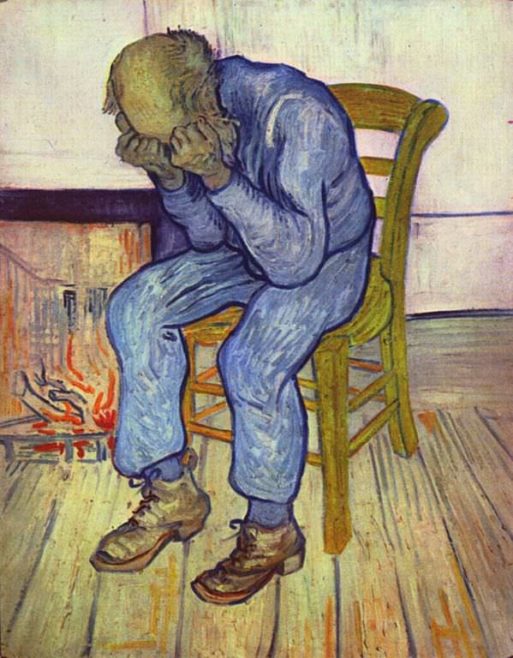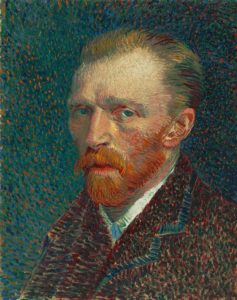An old man slumped in a chair holding his head in his hands appears in a number of Vincent Van Gogh’s lithographs and paintings. At first, the figure, dressed in work clothes and worn leather shoes, seems bent in total despair. But the despair is put into a new light when the title of VanGogh’s 1890 oil painting of the man comes into play. By naming the painting “At Eternity’s Gate,” the artist bestowed on this troubled old man the hope of eternal life.

At Eternity’s Gate
Credit:vincentvangogh.org
The original lithograph was based on a pencil drawing, “Worn Out,” one of a series of studies Van Gogh made of war veteran Adrianus Jacobus Zuyderland, who resided at a local almshouse in The Hague. He saw much beauty in Adrianus, writing, “What a fine sight an old working man makes, in his patched bombazine suit with his bald head,” shortly after first rendering the image in 1882.

Vincent Van Gogh self Portrait
Two days after first sketching Adrianus, Van Gogh commented on what he hoped to express in the lithograph of the workman, writing:
“One of the strongest pieces of evidence for the existence of ‘something on high’… namely in the existence of a God and an eternity, is the unutterably moving quality that there can be in the expression of an old man like that, without his being aware of it perhaps, as he sits so quietly in the corner of his hearth. At the same time something precious, something noble, that can’t be meant for the worms. … ”
Van Gogh further explained, “This is far from all theology — simply the fact that the poorest woodcutter, heath farmer or miner can have moments of emotion and mood that give him a sense of an eternal home that he is close to. ” Later, writing about the lithograph and two other drawings of Zuyderland, the artist remarked that they were meant to convey “the special mood of Christmas and New Year…” and his own belief in ” in something on high even if I don’t know exactly who or what will be there.”
At the time of the painting’s completion, Van Gogh was convalescing from a severe decline in his health. Two months later, at the age of 37, he died, presumably by his own hand.

 Van Gogh Saw the Promise of Christmas in his “At Eternity’s Gate”
Van Gogh Saw the Promise of Christmas in his “At Eternity’s Gate”


 First the Wealth Gap, Now the U.S. Has a Growing Health Gap
First the Wealth Gap, Now the U.S. Has a Growing Health Gap
 How to Comfort A Dying Loved One
How to Comfort A Dying Loved One
 Our Annual Seven Holiday Gifts for Someone Who Is Grieving, 2024 Edition
Our Annual Seven Holiday Gifts for Someone Who Is Grieving, 2024 Edition














